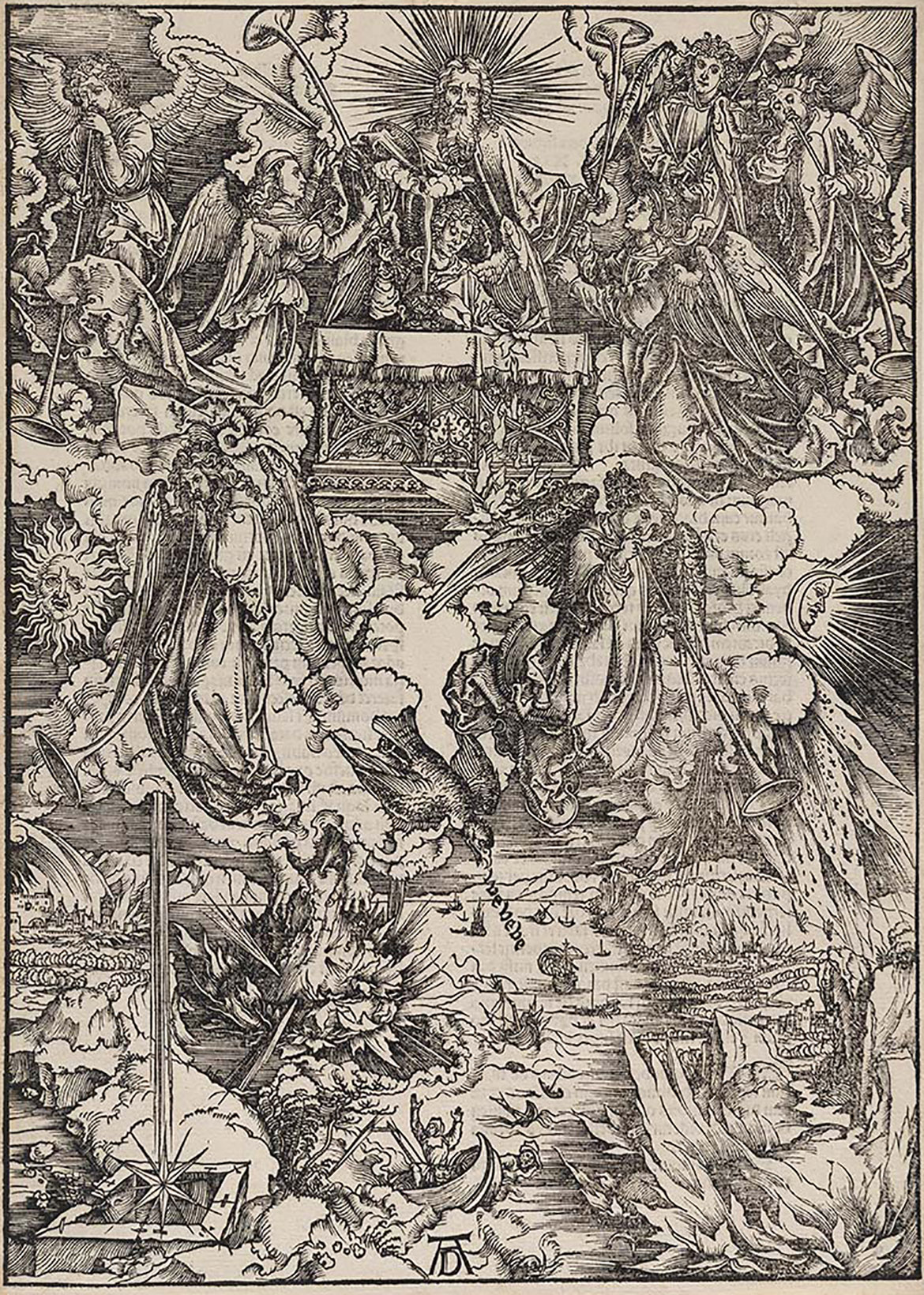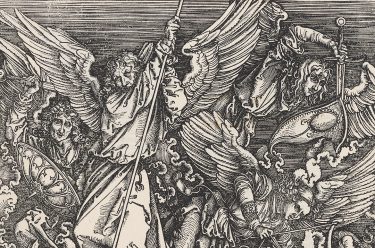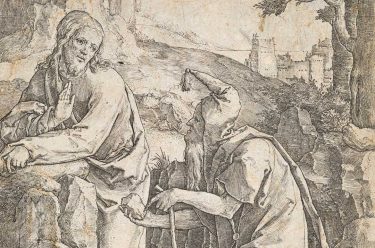Looking at Albrecht Dürer’s representations of the ‘last days’ – as described in the Book of Revelation of St John – it is not hard to imagine that, given a movie camera and a Hollywood studio budget, he would have turned his fantastic Apocalyptic saga into a major cinematic blockbuster. However, in the late fifteenth century, Dürer turned to the woodcut print to create a sequence of images that combined both high drama and mass appeal.
And when he had opened the seventh seal, there was silence in heaven about the space of half an hour. (Revelation 8:1)
The Apocalypse had been a subject of art since around the fourth century, but it wasn’t until the Middle Ages that depictions of the Day of Judgement became commonplace, becoming more pertinent to followers of Christianity as the Black Death devastated Europe (1348–50). With the impending turn of the millennium in 1500 inducing fears of an apocalypse, Dürer brought the story of death, cosmic destruction and eventual salvation alive in a way that no other artist before him had managed to do.
Published in book form in 1498, The Apocalypse revolutionised the graphic arts and became, in historical terms, an ‘international best seller’. It was this incredible response that prompted Dürer in 1511 to republish the series, both bound and available for sale as single sheet illustrations, together with a title page announcing it as ‘Apocalypse with figures’ (in contemporary terms, something like ‘The illustrated Apocalypse’).
Albrecht Dürer ‘The Opening of the Seventh Seal’ c.1496-97

Thinking about the almost cinematic scope of Dürer’s illustrations, I can’t help but make comparisons with Swedish director Ingmar Berman’s 1957 film The Seventh Seal (Det sjunde inseglet). While Dürer belonged to an epoch that unquestioningly believed in the existence of Heaven and Hell, God and the Devil, Bergman’s twentieth-century telling explores the widespread existential crisis of faith that characterised the atomic era following the end of World War Two.
In Dürer’s drama-filled illustration of The Seventh Seal (c.1496-97), (the seventh woodcut in the series), he shows the brief pause before the final three trumpet players sound their horns and an angel (in the form of an eagle) flies down crying ‘Woe, Woe, Woe’, in anticipation of the final catastrophic blows.
Bergman’s introspective film portrays a Teutonic knight, Antonius Block, returning from the Crusades to the plague-ravaged shores of his native Sweden in the early 14th century. It begins with the knight praying to God, only to be met with the ‘silence in heaven’ – the silence that immediately follows the breaking of the Seventh Seal on the Book of Revelation. ‘We live in ghost world’, concludes his atheistic squire, Jöns, following the knight’s unsuccessful quest to prove the existence of God, before Death finally claims him.
Bergman’s interpretation of the Apocalypse is in every respect a mid-twentieth century cinematic classic, but somehow I think Dürer would have been disappointed. When Death comes for the knight in Dürer’s film (at least as I imagine it), there would be no time for contemplation – and definitely no time-wasting chess games – just swords flying, buckets of blood, and a deafening heavy metal soundtrack.
Sally Foster is former Assistant Curator International Art (pre 1975), QAGOMA
Albrecht Dürer’s ‘Apocalypse’ 1498 is a digital resource in conjunction with the exhibition ‘Revelations’ combining close-up artwork details with corresponding passages from the King James Bible (1611) / Albrecht Dürer, Germany 1471-1528 / ‘Apocalypse’ series 1498 / Woodcut on paper / Purchased with the generous support of Mrs Selina Rivers, the Airey Family, Margaret Mittelheuser AM and Cathryn Mittelheuser AM, Josephine Ulrick and Win Schubert Diversity Foundation / Collection: Queensland Art Gallery | Gallery of Modern Art
#QAGOMA

